April 2nd saw the first swallow arrive: early. Too early for its own good in fact as it was greeted the following day by an inch of snow. By the 5th, however, there had been a melt and a bright and breezy day appeared which was just right for a cycle run over to Hethpool and a walk back along Cuthbert’s Way to Yetholm. Heralded by the lone swallow of a few days earlier spring was slowly emerging with much to “stop and stare at” (1). Indeed other favourite lines popped into my mind all along the way. Elsdon burn was full to the brim with snow melt, “horseback brown, a rollrock high road roaring down”(2)
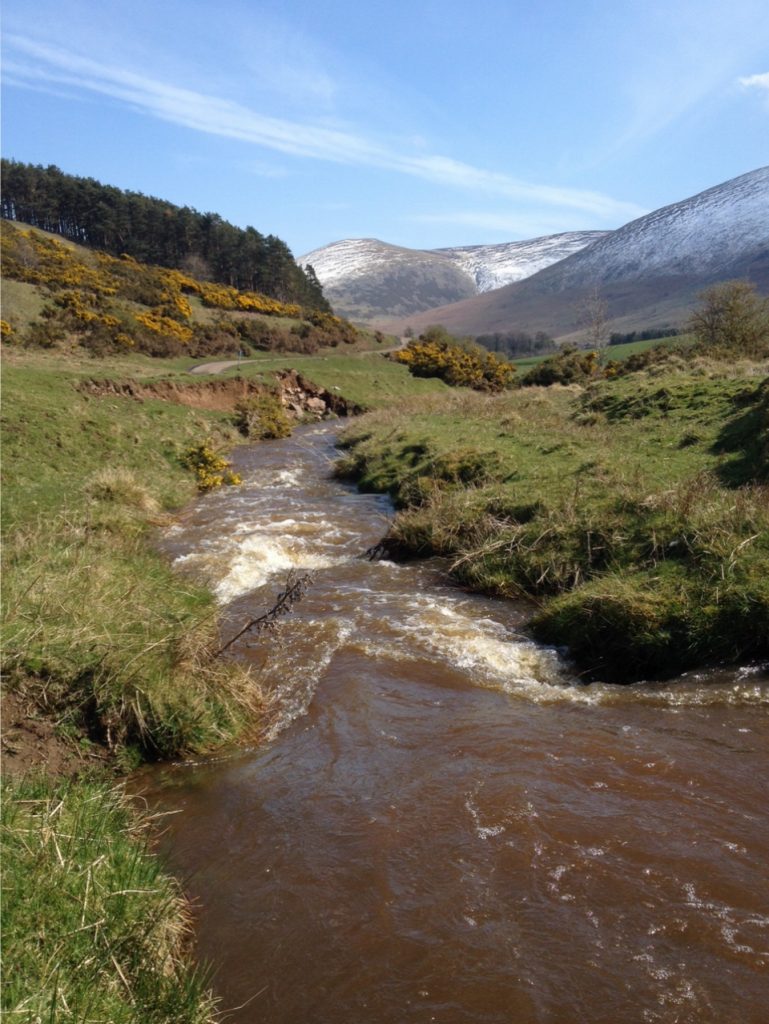
Cherry trees were on the verge of bloom just about on cue for “wearing their white for Eastertide” (3). A lark climbed high in the lee of Coldsmouth hill “brimful of gladness and love” (4) while arriving back home Clare’s “pettichap” (5) greeted me with song beside the pond. From the hornbeam a blackbird sang its rich music as though, as R. S. Thomas recorded, “the notes ore were changed to a rare metal at the touch of that bright bill.” (6) Spring had truly sprung.
It was a feeling which saw me out again on the 17th for another bike and hike. After cycling up the College valley to Mounthooly, I continued on foot up to the gorge at the edge of the Cheviots. There was one question on my mind “would they be there, the birds of moor, crag and scree?”

I settled down beneath a sun, blurred by thin altocumulus and scanned the jagged skyline. Nothing stirred amidst the the shades of grey, nothing that is until a speck of white fell in freefall from a ledge and a slate grey smudge wiggled. Then up and away, defecation complete, a peregring soared. A couple of fast fly bys confirmed that the bird was back in its chosen place. The cloud moved on, leaving sunshine to light up the scree and reveal a flutter of movement. Two wheatears were engaged in a courtship game of chase and there was more to come from this rocky terrain. Walking back beside the tumbling burn above the jumbled yellows of primroses, coltsfoot, gorse and broom a pitch- black shape arrowed out and alighted on top of a rock. No mistake. The white collar adorning its black plumage announced it to be a ring ouzel newly arrived from Central Europe and the Balkans. It was my third ever sighting. One more surprise awaited, one more welcome indication of things being in their rightful place at their right time. Farther on a black and orange shape perkily clung to the swaying tip of a gorse bush. It was as if I was ten again looking through my Brooke Bond Bird Portrait album of C. F Tunnicliffe illustrations. (7)
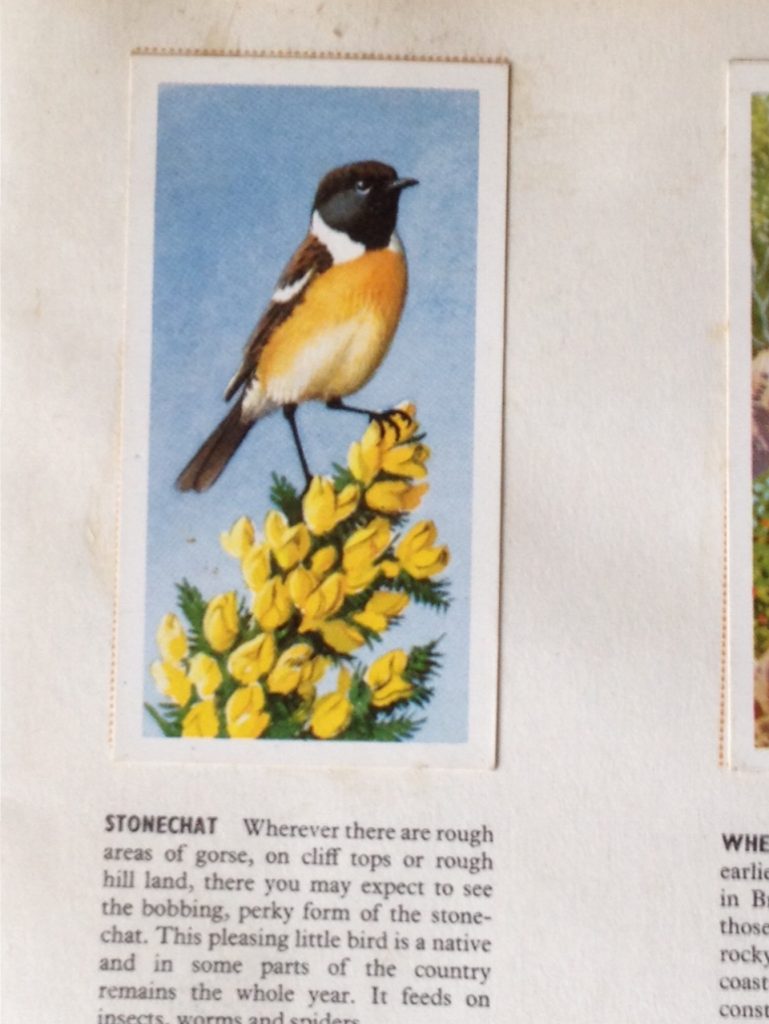
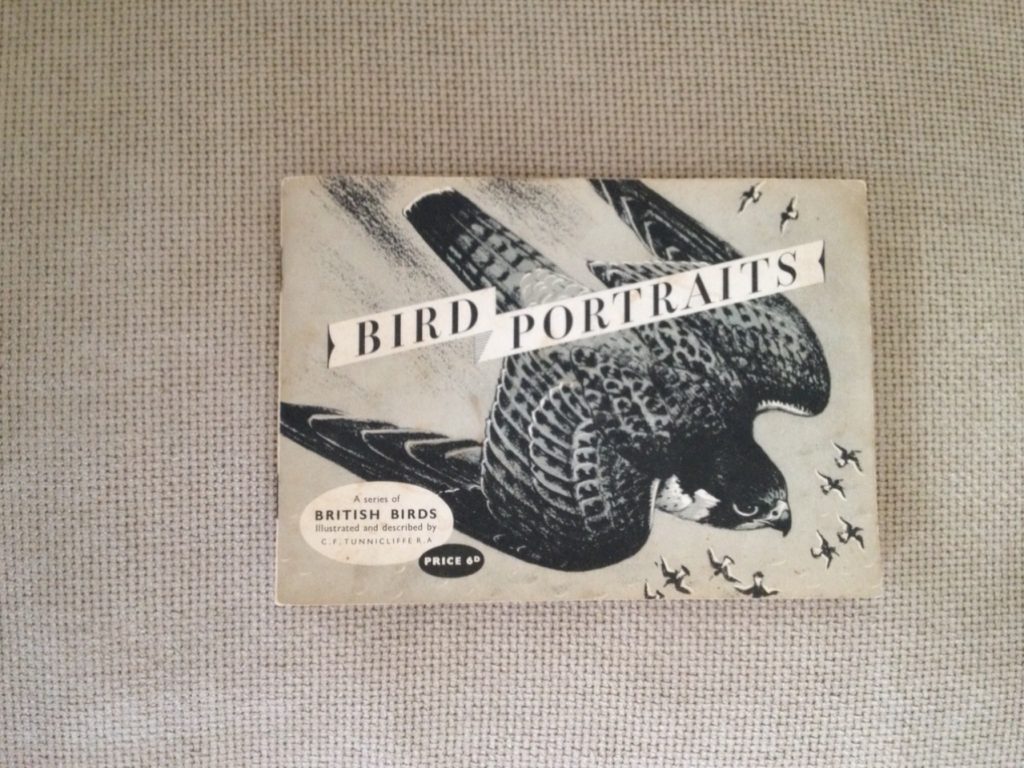
A stonechat in sunlit moorland habitat. For a moment it was as if time had stood still. That same feeling re-occurred over the Easter weekend. While the family scurried about the garden on an egg hunt, they were joined by butterflies. Self sown purple and white lunaria had attracted the year’s first orange tip (8). It was joined by large whites, flying out of the conservatory where last years caterpillar collection had safely metamorphosed and now emerged to take flight.
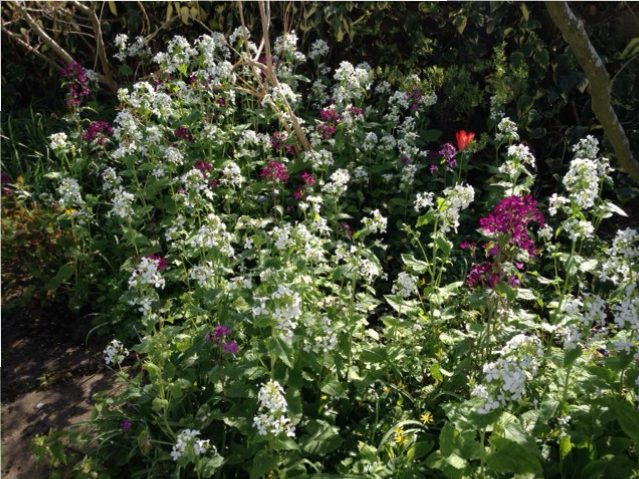
The world was indeed “turning” in its timeless reassuring manner. All was in its place. Seemingly.
Back in 1974 Neil Young sang these opening words to his song “On the Beach”(9). Perhaps like me he had been observing a world turning before adding a plaintive, melancholic, edge. In full he sings:
“The world is turning…
I hope it doesn’t turn away…..
I don’t want to see it turn away.”
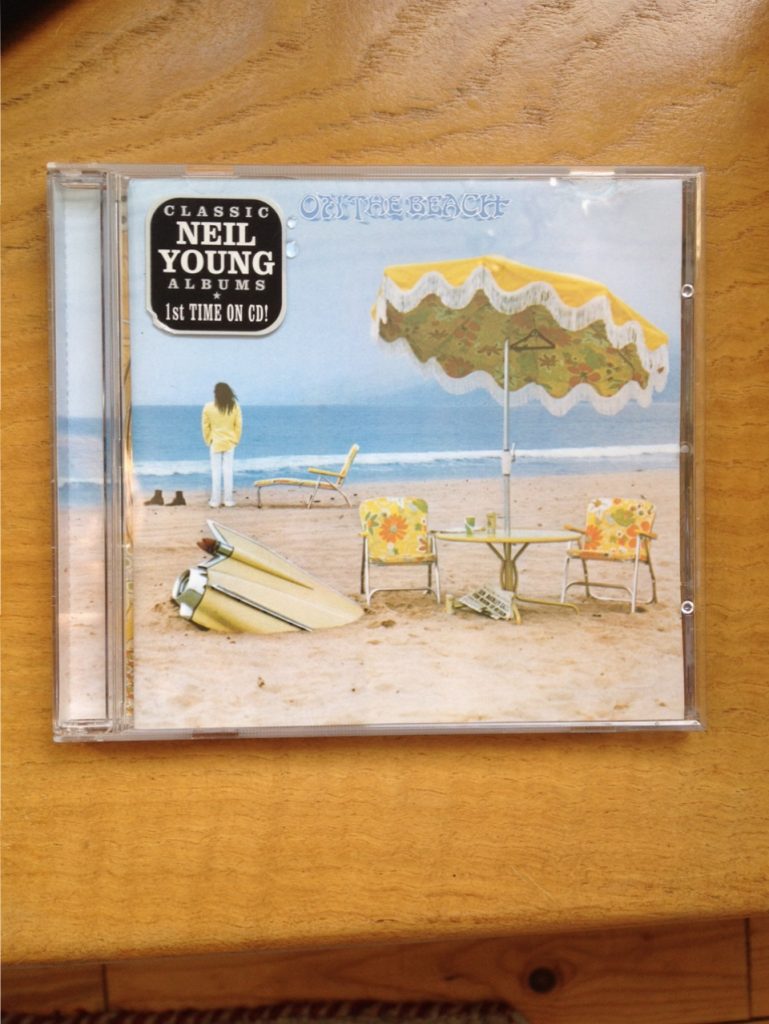
But the world did. It did turn away. Since then the natural world has been under a sustained attack. The wonders I have recorded above are now rare moments, a clinging on to life. Broad based scientific evidence, spanning fifty years, detailing our collective diminishing of the natural world and life supporting ecosystems, has been denied. We have allowed global warming and species extinction to become rampant.
A sixteen year old Swedish young woman has spoken for her generation and single handedly exposed the calamity and the moral failings of the adult world. Her words are heart wringing:
“We want our hopes and dreams back…. our house is on fire!” (10)
Can the world turn again, turn from oblivion onto a sustainable path for the benefit of all? The world wide Extinction Rebellion movement offers some hope that a clamour for change is afoot. My humble bike and hike revealed a snapshot of life forms clinging on to life. It’s not too late to act and give them back their home.
References.
- W. H. Davies. poem
- G. M. Hopkins. poem Inversnaid.
- A. E. Houseman. poem from collection entitled a Shropshire Lad
- S. T. Coleridge. from poem ‘The language of birds’.
- J. Clare. poem
- R.S. Thomas. poem ‘Blackbird.
- A series of fifty portraits of birds by C.F. Tunnicliffe. Each portrait was printed on a card which was available in every packet of Brooke Bond P. G. Tips tea.
- See Cooper. A. Guardian weekend magazine 30/3/19 for more on lunaria annua.
- Young. N. On the Beach. 1974. Reprise records
- Greta Thunberg. Guardian 24/4/19
